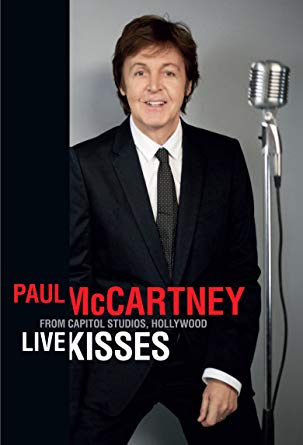Paul McCartney has never been afraid of pushing boundaries. While it would be easy for a household name, with adoration around the globe, to retire to occasional concerts and the comfort of his back catalogue, McCartney wants to experiment. He doesn’t always hit his mark, but with the immersive audio experience of Live Kisses, he has created a Grammy-worthy performance, backed up by a plethora of world-class musicians and the unerring production support of Al Schmitt and Tommy LiPuma, who helped McCartney turn this collection of diverse songs into something to write home about, and an incredible audio (and visual) spectacle.
Macca only wrote two songs on the album. It would be a lie to say there is no self-indulgence on the album. He was inspired to cover many of the songs he would hear his father play on the piano while growing up. After half a century at the top of his game, we can forgive McCartney a little nostalgia.

Macca only wrote two songs on the album. It would be a lie to say there is no self-indulgence on the album. He was inspired to cover many of the songs he would hear his father play on the piano while growing up. After half a century at the top of his game, we can forgive McCartney a little nostalgia.This nostalgia doesn’t become in any way boring, and with the musical support of jazz musicians, Paul croons his way through the album with audible enjoyment. This heartfelt collection of renditions feels immersive in the way it is made, but also in the way it has been recorded and the way the video edition was shot. To take a live version of songs and turn it into a tender yet engrossing album is a testament to Schmitt and LiPuma, who pull together double bass, orchestral instruments, and jazz-club drumming in rapturous synchronicity.
Many of the tunes rattled through by Paul McCartney were totally new to some of the audience of the Grammys in 2014, even if they had been around for many decades. Macca first snarls into a rendition of “I'm Gonna Sit Right Down and Write Myself a Letter” with a walking double bass delving us into the basement of a jazz club as the seemingly effortless musicianship surrounds us.
Highlights include all the fun of “Ac-Cent-Tchu-Ate the Positive,” a song covered by dozens of musicians, with space for gorgeous solos to enrapture us and McCartney to toe-tap his way through a love affair with the classic. “Bye Bye Blackbird,” originally penned in 1926 and reborn with a suaveness, is another standout track.
The performance received a lot of attention. McCartney’s experimental side further showed itself, not just in the songs he covered, but also in the way the music was released, becoming a true audio-visual experience. The album was recorded live at Capitol Studios in Los Angeles, and was also available for streaming. The surround sound experience and moody black-and-white Blu-Ray disc were examples of how Paul, along with video director Jonas Åkerlund and both Schmitt and LiPuma, set out to provide high fidelity experience for all who tuned in.
To win a Grammy based on a live recording shows the musicianship and the engineering skills on display. Macca doesn’t perfectly hit all the notes, but this adds to the charm of an album created to be joyful rather than clinical

